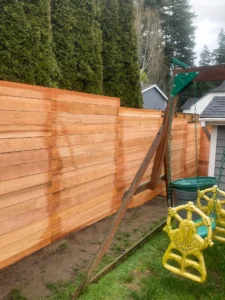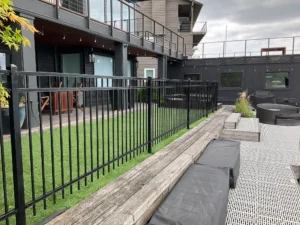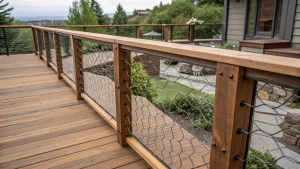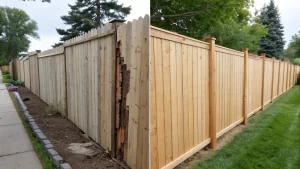Protect your cedar fence with the right finish – Inline Fence explains staining vs sealing, helping Seattle homeowners choose lasting beauty, durability, and smart maintenance ✨
Cedar is one of the most popular fencing choices in the Pacific Northwest, thanks to its natural beauty and resilience. Still, even the toughest wood requires protection when faced with months of heavy rain, damp winters, and the occasional heatwave. That’s where the debate of cedar fence staining vs sealing in Seattle comes in — a choice that affects how long your fence will last, how much upkeep it will require, and how it looks over time.
Many homeowners face the decision of whether to stain or seal their cedar fence and want to understand the real difference between the two. Staining enhances the wood’s natural grain and protects against UV rays, while sealing focuses on creating a water-resistant barrier to prevent warping and moisture damage. Both methods have advantages, but the best choice depends on your priorities for Seattle cedar fence care, color retention, and long-term cedar fence durability.
In this guide, we’ll cover the mechanics of stains and sealers, compare costs, explore durability across Seattle’s microclimates, and provide actionable advice on cedar fence maintenance in Seattle residents can rely on. We’ll also highlight professional cedar fence staining services in Seattle from Inline Fence for homeowners who want expert help and show how water vs oil based deck stain products perform in the local environment. By the end, you’ll have a clear picture of how to secure your investment, maintain your fence’s beauty, and make informed choices about cedar fence protection.
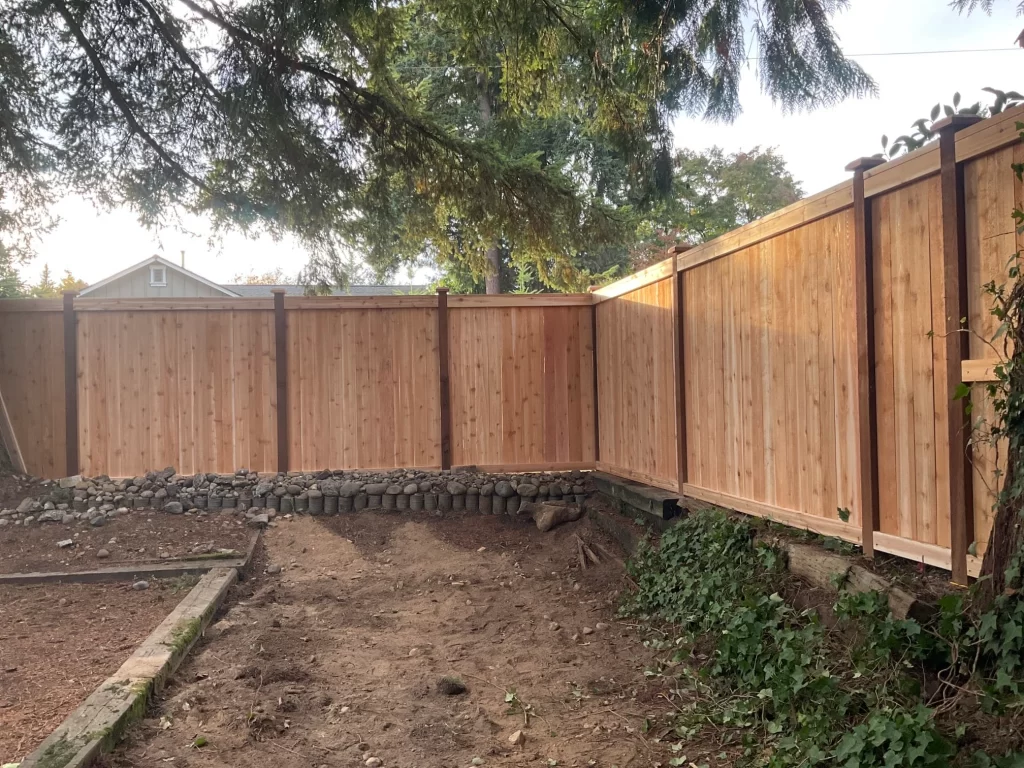
Technical Breakdown: How Stains and Sealers Work
Before deciding between cedar fence stain vs seal, it’s essential to understand how each product interacts with wood. While they may seem similar, stains and sealers serve different purposes and offer distinct benefits for Seattle cedar fence care.
Stains: Penetrating Color + UV Defense
Stains penetrate the wood fibers, highlighting the natural grain while providing protection against the sun’s harmful UV rays. This not only enhances the fence’s aesthetic appeal but also slows surface graying and wear. High-quality stains also contribute to cedar wood preservation by minimizing moisture absorption.
Choosing between water vs oil based deck stain is important. Water-based stains dry quickly, clean up easily, and are low in odor, making them convenient for DIY applications. Oil-based stains, on the other hand, penetrate deeper and generally provide longer-lasting moisture resistance — ideal for Seattle’s rainy winters.
Sealers: Moisture Shielding for Damp Conditions
Sealers focus primarily on water resistance rather than color. They coat the surface, repelling moisture and reducing the risk of warping or rot. This is where cedar fence sealing benefits become clear — especially in Seattle, where untreated wood can swell or crack quickly. However, sealers often need reapplication more frequently than quality stains and offer minimal UV defense.
For homeowners prioritizing cedar fence durability, using the best cedar fence sealant ensures the finish doesn’t peel under rain exposure and provides extra resilience against moisture buildup.
Hybrid Approaches
Some modern products combine stain and sealer in a single formula, delivering UV protection, water resistance, and a natural finish. While more expensive upfront, these hybrids can be a low-maintenance fence option for homeowners looking to reduce frequent upkeep.
🗝️ Key takeaway: Both methods are valuable for cedar fence maintenance in Seattle residents rely on. The choice depends on whether your priority is color longevity, moisture resistance, or a balance of both.
Application Methods
Proper application is just as important as product selection:
- DIY Fence Staining: Homeowners can use brushes, rollers, or sprayers. Back-brushing ensures deeper penetration and even coverage, particularly on a horizontal cedar fence.
Professional Services: Hiring a professional fence staining service guarantees uniform application, access to premium products, and expert handling of complex fence layouts or durability fence upgrades.
Water vs Oil-Based Products
Choosing between water vs oil based deck stain affects performance in Seattle’s damp climate:
- Water-based stains dry faster, are easier to clean, and have lower odor.
- Oil-based stains penetrate deeper, resist moisture longer, and often outperform water-based formulas in wet environments.
🗝️ Key takeaway: Selecting the right product and applying it properly ensures your cedar fence stays protected and beautiful, reduces frequent maintenance, and maximizes durability over time.
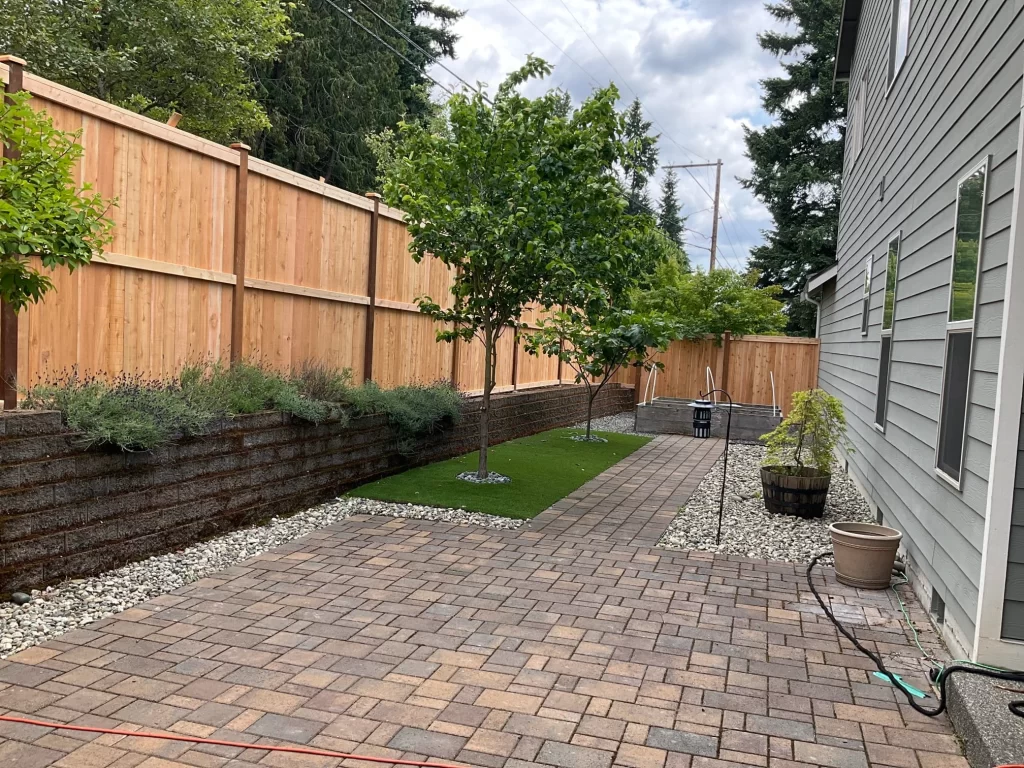
Cost Comparison: Upfront Investment and Long-Term Value
Cost is a major factor in the cedar fence stain vs seal decision. Beyond the initial product price, it’s important to consider long-term value, cedar fence longevity, and potential maintenance expenses.
Upfront Costs
- Stains: High-quality penetrating stains typically cost more per gallon than sealers, especially premium or hybrid formulas. While this increases the initial cedar fence price, the investment pays off over time by reducing frequent reapplications.
- Sealers: Generally less expensive upfront, sealers cover larger areas per gallon but may require more frequent touch-ups, particularly in Seattle’s wet climate.
When budgeting for cedar fence staining vs sealing in Seattle, here’s what you can expect:
Product | Average price | Covers |
Stain | $35–$55 per gallon | 150–250 sq. ft. |
Sealer | $25–$40 per gallon | 200–300 sq. ft. |
Long-Term Value
Premium stains and hybrid products offer longer-lasting protection against both UV and moisture damage, which helps maintain durability and can extend longevity. Sealing alone may save money initially, but repeated applications and higher maintenance can offset these savings.
Labor and Maintenance Considerations
Applying stain often requires more effort than sealing. Homeowners must back-brush or use sprayers carefully to ensure even penetration, especially on a horizontal cedar fence. Some prefer hiring a professional fence staining service, which guarantees uniform coverage and access to the best cedar fence sealant for lasting protection.
The Value of Protection
Ultimately, investing in the right product is about long-term savings and fence preservation. By considering both the cedar fence price and the cost of upkeep, homeowners can make informed choices that protect their investment while reducing future durability fence upgrades.
At Inline Fence, we know that choosing between staining and sealing isn’t just about the upfront cost of a gallon of product. Our team walks homeowners through real numbers, application schedules, and product performance, so you can plan confidently and avoid surprise maintenance bills. This practical guidance is one reason Inline Fence is considered a go-to cedar fence contractor in Seattle.
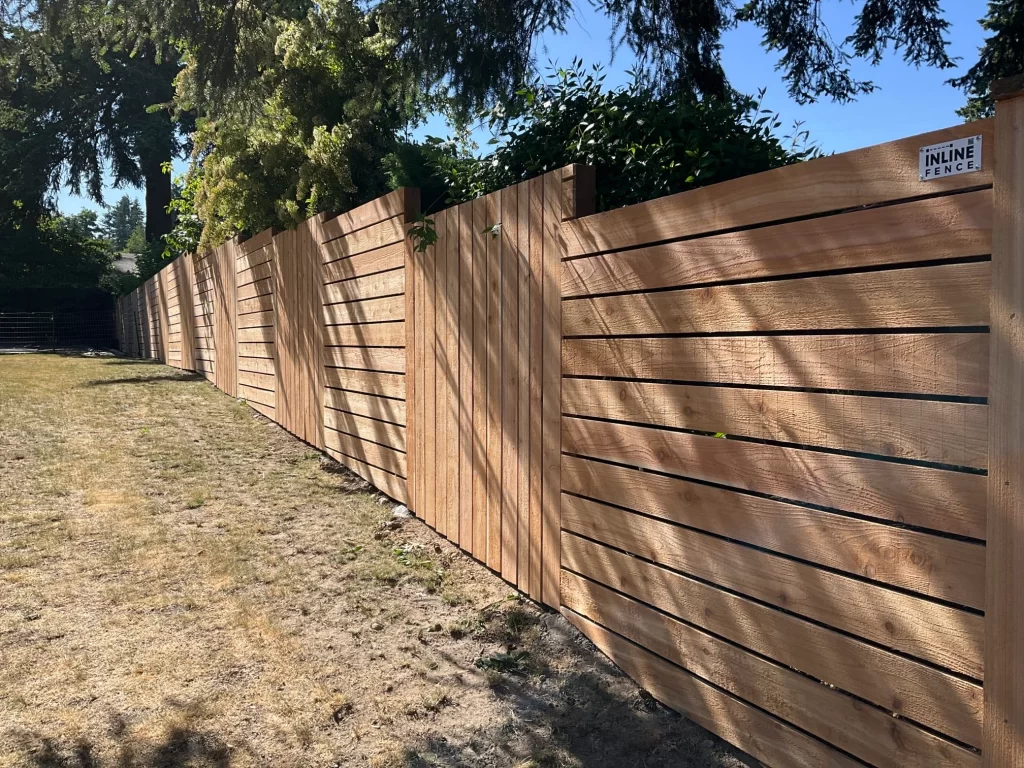
Durability in Seattle Microclimates
Even the best cedar fence sealant or high-quality stain performs differently depending on where your home sits in the Seattle area. Understanding how local microclimates affect your fence durability is essential for choosing the right treatment.
Seasonal Maintenance Tips
Seattle’s damp winters and humid summers expose fences to constant moisture, which can accelerate graying, warping, or moss growth. Homeowners can extend their fence durability with simple seasonal care:
- 🌿 Spring: Inspect for moss, mildew, or debris. Clean with a soft brush or mild solution before applying a touch-up coat of stain or sealer.
- 🍂 Fall: Remove leaves and plant debris to prevent trapped moisture. Reapply protective finish to areas most exposed to rain.
Regular attention reduces the need for frequent fence staining and minimizes the risk of premature wear.
Microclimate Effects
Seattle’s neighborhoods vary in sun exposure, soil type, and proximity to water, affecting fence performance:
- Salt-Air Areas: Homes near Puget Sound (Magnolia, Alki) face extra moisture and salt exposure. Penetrating stains are often better than surface sealers in these zones.
- Shady, Moss-Prone Neighborhoods: Tree-covered areas (Ballard, Phinney Ridge) create damp conditions where moss thrives. Hybrid products combining stain and sealer are particularly effective.
- Clay and Moisture-Retentive Soils: Eastside slopes and areas with clay-rich soil retain water, increasing the risk of rot. Penetrating stains paired with occasional re-sealing provide superior cedar fence protection.
🗝️ Key takeaway: By integrating seasonal care with microclimate considerations, homeowners can maximize Seattle cedar fence care, maintain its longevity, and ensure their investment remains attractive year-round. Choosing the right combination of stain, sealer, or hybrid product reduces maintenance frequency and enhances overall durability.
Decision Guide: Which Option is Right for You?
After reviewing costs, durability, and maintenance, it’s time to determine the best approach for your fence. This quick reference summary simplifies the cedar fence staining vs sealing in Seattle decision.
Priority | Recommended Option | Key Benefit |
Color & UV Protection | Penetrating Stain | Long-lasting beauty, reduces gray fading |
Water Resistance | Sealer | Protects against moisture, easy initial application |
Low Maintenance | Hybrid Stain/Sealer | Combines UV & moisture defense, extends fence life |
By matching your choice to your priorities, you can confidently select the right approach for your cedar fence in Seattle and enjoy years of protection and beauty.
Protect Your Cedar Fence for Long-Term Beauty
A cedar fence is more than a property line — it’s a feature that adds beauty, value, and long-term durability to your Seattle home. By understanding the differences between staining and sealing, you can choose the finish that protects your fence against rain, sun, and time itself.
If you’re ready to keep your cedar fence looking its best with professional treatment and reliable cedar fence maintenance Seattle homeowners can trust, don’t wait.
Contact Inline Fence
Your fence deserves lasting protection — let’s give it the care that keeps it strong and stunning for years to come.


